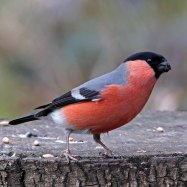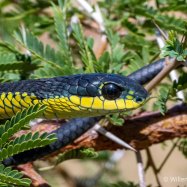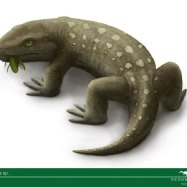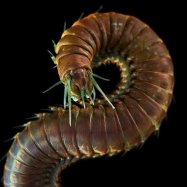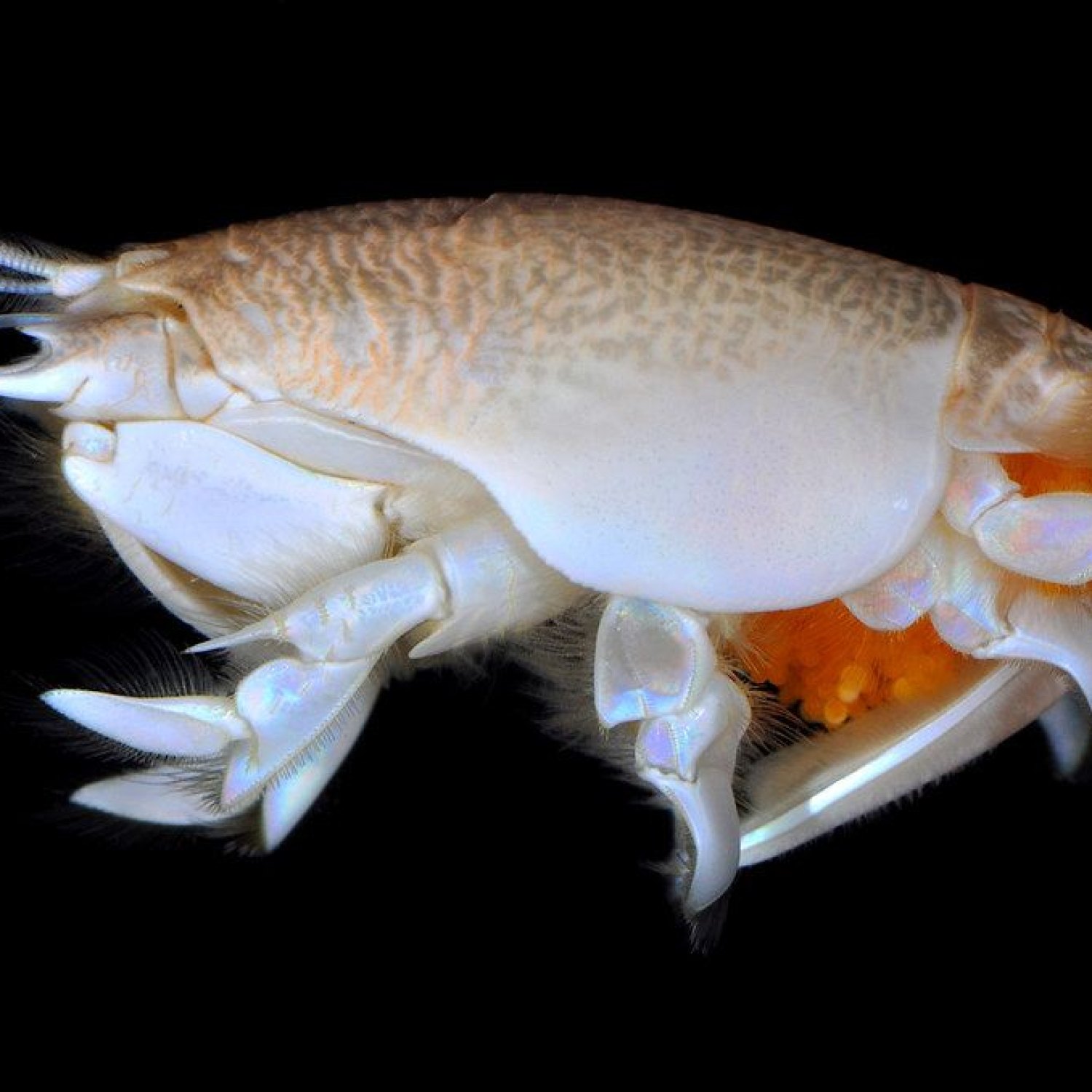
Mole Crab
About 1 inch
Meet the Mole Crab, a small but mighty creature found along the California coast. With a flattened oval-shaped body, these Hippidae family members measure about 1 inch long. Don't underestimate their size, these little guys are important members of their coastal ecosystem. #MoleCrab #CaliforniaCoast #Hippidae
Animal Details Summary:
Common Name: Mole Crab
Kingdom: Animalia
Habitat: Sandy beaches
Welcome to the Fascinating World of the Mole Crab: The Little Creature that Lives under the Sand
As you walk along the sandy beaches of the California coast, you might not realize that beneath your feet is an intricate world filled with fascinating creatures. One such creature is the Mole Crab, also known as Emerita analoga, a small crustacean that resides in the Eastern Pacific Ocean. Despite its tiny size, this little creature has unique adaptations and behaviors that make it an intriguing subject to learn about. In this article, we will dive deeper into the world of the Mole Crab – from its scientific classification to its habitat, feeding methods, and more Mole Crab.Scientific Classification
The Mole Crab falls under the Animalia kingdom, which includes all animals. Within this kingdom, it is classified under the phylum Arthropoda, meaning it has jointed legs and a hard exoskeleton. This phylum also includes insects, spiders, and crabs. Moving further down the classification, the Mole Crab belongs to the class Malacostraca, which includes a variety of crustaceans such as shrimps, lobsters, and crabs. It is then classified under the order Decapoda, which means 'ten feet' and includes animals with ten legs, including the Mole Crab. Lastly, the Mole Crab is part of the family Hippidae, a group of marine crustaceans commonly known as the Sand Crabs.
Habitat and Distribution
As the name suggests, the Mole Crab is found in sandy beaches along the California coast, making it a native species of the United States. It prefers to live in the intertidal zone, the area between the high and low tide, where it can burrow and thrive. Its specialized adaptations allow it to navigate and survive in the ever-changing sandy environment Mexican Eagle. It is also found in the Eastern Pacific Ocean, from Alaska to Chile, where it shares similar sandy beaches with its California cousins.
Physical Characteristics
The Mole Crab has a unique body shape that sets it apart from other crustaceans. It has a flattened oval-shaped body that is approximately one inch long, making it one of the smallest crabs found in the Pacific Ocean. Its body is covered with a hard exoskeleton, which provides both protection and support. This exoskeleton also helps the Mole Crab to retain water, preventing dehydration in the sandy environment.
At first glance, one might mistake the Mole Crab for a miniature horseshoe crab, as they share similar features, including a slightly curved body and spiky legs. However, upon closer observation, one can note that the Mole Crab has a shorter tail and is smaller in size.
Coloration
The Mole Crab comes in various colors, ranging from dark brown to grayish hues, perfectly blending in with its sandy surroundings. This coloration also serves as a protective mechanism, making it difficult for predators to spot the Mole Crab. In addition to their body color, their antennae also have special dark brown bristles, allowing them to sense vibrations in the sand.
Feeding Methods
The Mole Crab is a deposit feeder, meaning it feeds on organic matter such as algae, plankton, and other small marine organisms found in the sand. It uses its feathery appendages, also known as antennae, to filter out the sand and extract food particles. These antennae are constantly flicking back and forth, catching and directing food towards the Mole Crab's mouth.
One interesting fact about the Mole Crab's feeding behavior is that it only feeds during high tide. As the tide comes in, it brings in more organic matter, increasing the availability of food for the Mole Crab. This behavior also helps them avoid predators, who are more active during low tide.
Adaptations
The Mole Crab has unique adaptations that help it survive in its sandy habitat. One such adaptation is its specialized antennae, which it uses not only for feeding but also for respiration. The Mole Crab can absorb oxygen from the water through its gills, but when it burrows in the sand, its gills may not get enough oxygen. To compensate for this, it can take in oxygen through its antennae, which are positioned near the surface of the sand.
Another interesting adaptation of the Mole Crab is its ability to dig and move efficiently through the sand. It has powerful appendages called pleopods, which it uses to move quickly and efficiently through the sand. These pleopods also have bristly hairs that serve as anchors, keeping the Mole Crab steady in the constantly shifting sand.
Reproduction and Life Cycle
The Mole Crab has a unique way of reproduction, known as seminal intraspersion. This means that males release sperm packets into the water, where females can collect and fertilize their eggs. The fertilized eggs then develop into larvae, which are carried by ocean currents until they are deposited onto the shore. Here, they grow and develop into adult Mole Crabs.
It takes about one year for the Mole Crab to reach maturity, and they can live up to three years. They have a high reproductive rate, producing thousands of eggs at a time, which is vital for sustaining their population in their constantly changing environment.
Threats and Conservation
While the Mole Crab faces many threats in its natural habitat, including climate change, pollution, and human disturbance, it is not considered a threatened species. Its high reproductive rate and widespread distribution help offset the negative impacts of these threats.
However, it is essential to keep in mind that the Mole Crab plays a vital role in maintaining the balance of the sandy beach ecosystem. As deposit feeders, they help keep the sand clean and provide a food source for other species, including sea birds and fish. Therefore, it is crucial to protect and preserve their habitat to ensure the sustainability of their population and the ecosystem.
Mole Crabs and Humans
The relationship between humans and Mole Crabs is a complex one. While they may not be the most charismatic creatures, they play a vital role in maintaining the balance of the beach ecosystem. They also have a significant impact on beach tourism, as they are a popular bait for fishing and are also used as live food for some aquarium animals.
One of the most interesting interactions between humans and Mole Crabs is the role they play in beach nourishment. Beach nourishment is the process of restoring eroding beaches by adding sand to them, often using sand from offshore sources. During this process, Mole Crabs are often displaced, causing concern among ecologists. However, studies have shown that Mole Crabs can quickly repopulate these nourished beaches, showing their resilience and adaptability.
The Fascinating Mole Crab: A Small Creature with Big Impacts
From its unique adaptations to its important role in maintaining beach ecosystems, the Mole Crab is truly a fascinating creature. Despite its tiny size, it has made a big impact on the beaches of California and the Eastern Pacific Ocean. Through its specialized behavior and physical features, it has adapted to survive and thrive in the sandy environment. As humans, it is our responsibility to protect and preserve this little creature and its habitat for the sake of our beaches and the intricate web of life that depends on them. Next time you're walking along the sandy shores, take a closer look – you never know what hidden wonders you may discover beneath your feet.

Mole Crab
Animal Details Mole Crab - Scientific Name: Emerita analoga
- Category: Animals M
- Scientific Name: Emerita analoga
- Common Name: Mole Crab
- Kingdom: Animalia
- Phylum: Arthropoda
- Class: Malacostraca
- Order: Decapoda
- Family: Hippidae
- Habitat: Sandy beaches
- Feeding Method: Deposit feeders
- Geographical Distribution: Eastern Pacific Ocean
- Country of Origin: United States
- Location: California coast
- Animal Coloration: Dark brown or grayish
- Body Shape: Flattened oval-shaped body
- Length: About 1 inch
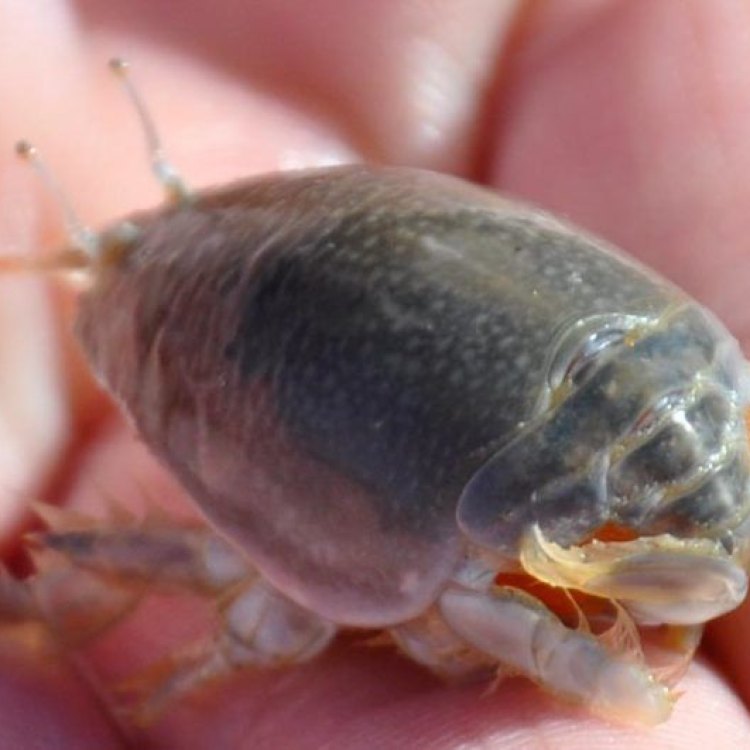
Mole Crab
- Adult Size: About 1 inch
- Average Lifespan: 1-2 years
- Reproduction: Sexual
- Reproductive Behavior: Males grasp females during mating
- Sound or Call: No sound production
- Migration Pattern: No significant migrations
- Social Groups: Solitary
- Behavior: Burrows in sand to escape predators
- Threats: Predation by birds, fish, and other crabs
- Conservation Status: Not evaluated
- Impact on Ecosystem: Important prey species
- Human Use: Used as bait in fishing
- Distinctive Features: Well-developed claws for digging
- Interesting Facts: Also known as sand crabs
- Predator: Birds, fish, and other crabs
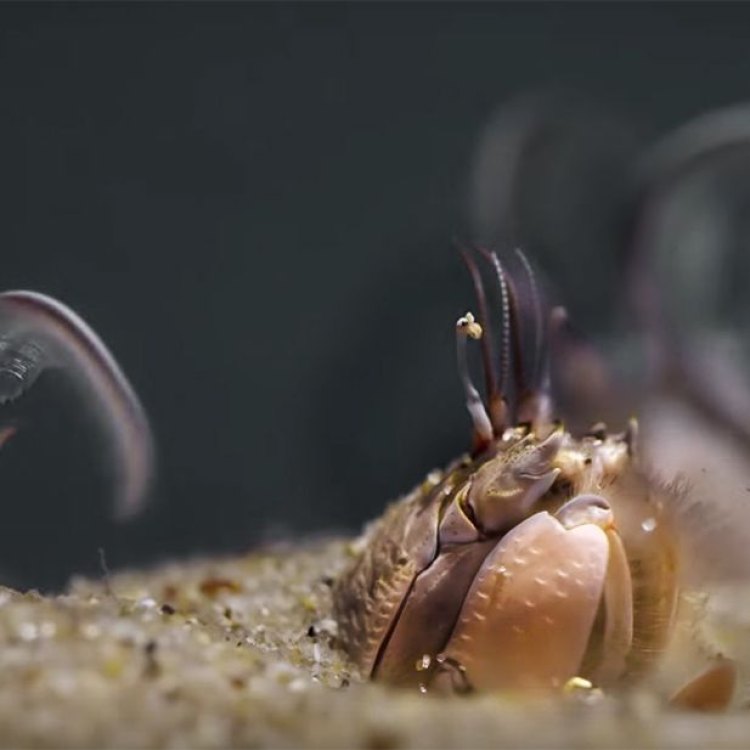
Emerita analoga
The Fascinating World of Mole Crabs: Tiny Creatures with a Big Impact
The world is filled with amazing creatures, big and small. While most people are fascinated by the larger, more well-known animals like lions, elephants, or sharks, there are countless smaller species that often go unnoticed. One such overlooked creature is the mole crab.At first glance, the mole crab may seem like an unremarkable and insignificant crustacean, but upon closer inspection, you will discover that these tiny creatures have some unique and fascinating features PeaceOfAnimals.Com. In this article, we will delve deep into the world of mole crabs, exploring their physical characteristics, behavior, and their impact on the ecosystem.
Size and Lifespan
Mole crabs, also known as sand crabs, are small in size, with an average adult length of about 1 inch. They have elongated, oval-shaped bodies with rounded heads and segmented limbs. Their bodies are covered in a hard outer shell or exoskeleton, which protects them from predators and also helps in retaining moisture.
These small creatures have an average lifespan of 1 to 2 years, with some individuals living up to 3 years in the wild. However, their short lifespan is not the only challenge they face in the wild.
Behavior and Reproduction
Mole crabs are primarily solitary creatures, with no significant social groups or interactions. They are usually found burrowing in the sand, just above the waterline on sandy beaches. This behavior helps them to escape predators and also to maintain their body temperature Mongoose.
When it comes to mating, mole crabs have a unique reproductive behavior. As sexual reproducers, they rely on males and females coming together to reproduce. However, it's not as simple as it sounds. During mating, the male mole crab will use its specialized claws to grasp onto the female. This behavior, known as "clasperization," helps the male to hold onto the female during the water's turbulent movements and prevents him from being washed away.
Unfortunately, this also means that the female mole crab is unable to move and is at a greater risk of being preyed upon by birds, fish, and other crabs. However, it is a necessary risk for the continuation of the species.
No Sound Production and Migration Pattern
One of the most interesting facts about mole crabs is that they do not produce any sound or call. They are passive creatures that rely on their burrowing behavior for survival and do not have the need to communicate with each other through sound.
Another unique feature of mole crabs is their lack of significant migration patterns. Unlike other crustaceans, they do not undertake long-distance migrations. They stay in their preferred habitat, burrowing in the sand, and only move with the tides and waves.
Threats and Conservation Status
As with any other species, mole crabs face threats in the wild. These tiny creatures are preyed upon by a variety of animals, including birds, fish, and other crabs. Due to their small size, they are an easy target for predators, and their burrowing behavior can only offer so much protection.
Despite facing various threats, the conservation status of mole crabs has not been evaluated. This may be because they are not considered a commercially important species, and their populations have not been significantly affected by human activities. However, it is still essential to monitor their populations and understand their role in the ecosystem.
Impact on the Ecosystem
Mole crabs may be small, but they play a significant role in the ecosystem. They are considered an important prey species, providing food for a wide range of predators, including shorebirds, fish, and other crabs. This makes them an essential link in the food chain, and any changes in their populations can have a ripple effect on the entire ecosystem.
Moreover, their burrowing behavior also has a positive impact on the ecosystem. As they burrow in the sand, they help aerate the sand, which benefits other animals that live in it, such as clams and worms. They also help to mix sand layers, which can be beneficial for the growth and survival of beach plants.
Human Use and Distinctive Features
While mole crabs may not be considered a human food source, they are commonly used as bait in fishing. They are an abundant and convenient source of bait, making them a popular choice for fishermen.
One of the distinctive features of mole crabs is their well-developed claws. These specialized claws are primarily used for digging and burrowing in the sand. They are powerful and efficient, allowing the mole crab to quickly disappear into the sand when faced with a potential threat.
Other Interesting Facts
Apart from being known as sand crabs, mole crabs also have other interesting names. In some regions, they are referred to as "ocean bugs" or "beach fleas" due to their resemblance to a flea in appearance and size.
Another fascinating fact about mole crabs is that they have a predator – the tiny mole crab. These tiny parasites live on the gills of adult mole crabs, sucking nutrients and causing harm to the host. However, this parasitic relationship has not been found to have a significant impact on the mole crab populations.
The Importance of Understanding Small Creatures
In a world where bigger and more significant species often take the spotlight, it is crucial to also shed light on the smaller, lesser-known creatures. As we have seen, mole crabs may be small, but they have fascinating characteristics and play a vital role in the ecosystem.
By understanding these tiny creatures and their unique features, we can gain a better understanding of the complex web of life on our planet. We can also appreciate the importance of preserving their populations, as any changes in their populations can have far-reaching consequences for the entire ecosystem.
In conclusion, mole crabs may not be the most well-known or glamorous creatures, but they are undoubtedly unique and fascinating in their own way. The next time you visit the beach, take a closer look at the sand, and you may just spot a mole crab burrowing away, playing an essential role in the fragile balance of the coastal ecosystem.

Welcome to the Fascinating World of the Mole Crab: The Little Creature that Lives under the Sand
Disclaimer: The content provided is for informational purposes only. We cannot guarantee the accuracy of the information on this page 100%. All information provided here may change without prior notice.


